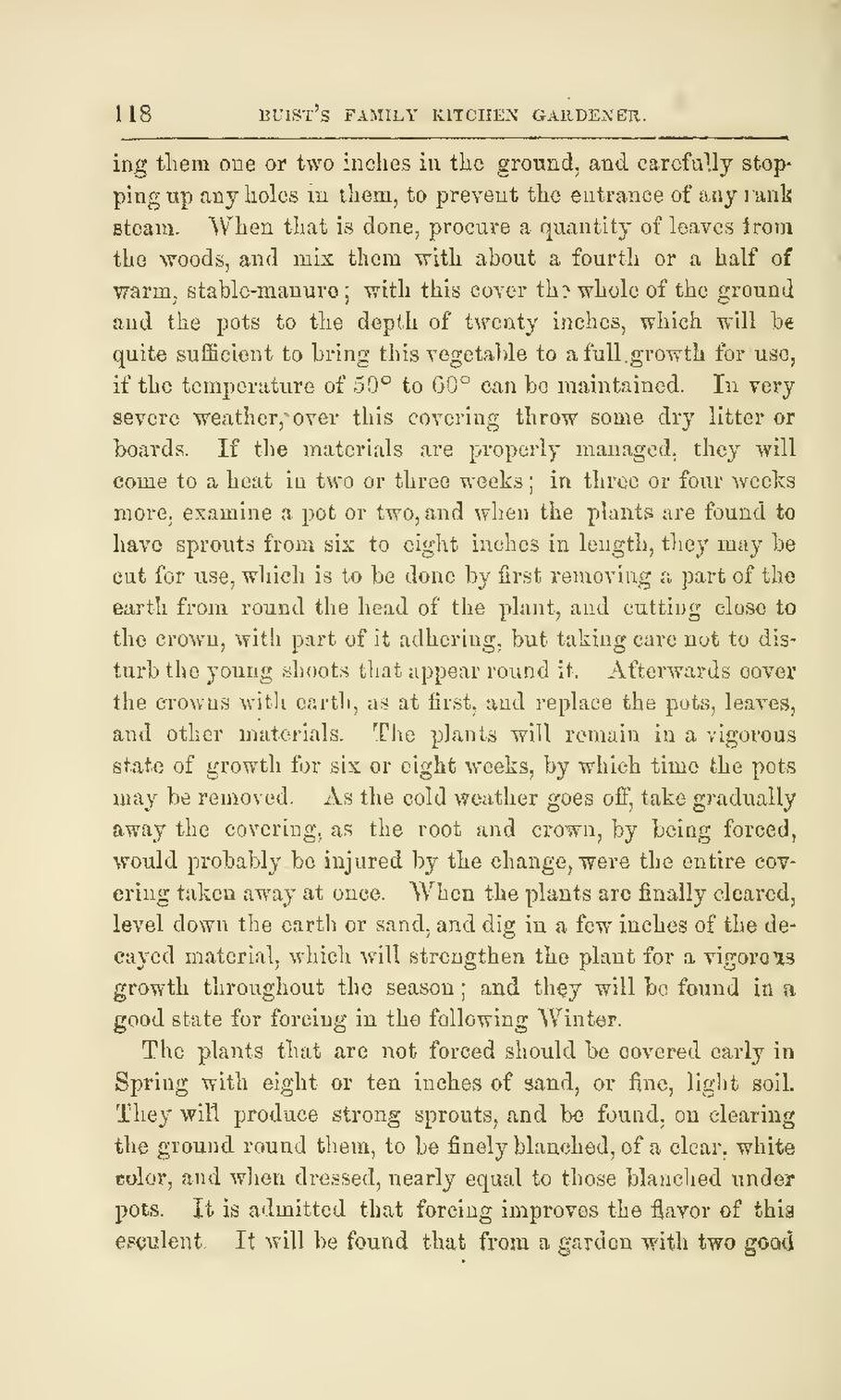ing them one or two inches in the ground, and carefully stopping up any holes in them, to prevent the entrance of any rank steam. When that is done, procure a quantity of leaves from the woods, and mix them with about a fourth or a half of warm, stable-manure; with this cover the whole of the ground and the pots to the depth of twenty inches, which will be quite sufficient to bring this vegetable to a full growth for use, if the temperature of 50° to 60° can be maintained. In very severe weather, over this covering throw some dry litter or boards. If the materials are properly managed, they will come to a heat in two or three weeks; in three or four weeks more, examine a pot or two, and when the plants are found to have sprouts from six to eight inches in length, they may be cut for use, which is to be done by first removing a part of the earth from round the head of the plant, and cutting close to the crown, with part of it adhering, but taking care not to disturb the young shoots that appear round it. Afterwards cover the crowns with earth, as at first, and replace the pots, leaves, and other materials. The plants will remain in a vigorous state of growth for six or eight weeks, by which time the pots may be removed. As the cold weather goes off, take gradually away the covering, as the root and crown, by being forced, would probably be injured by the change, were the entire covering taken away at once. When the plants are finally cleared, level down the earth or sand, and dig in a few inches of the decayed material, which will strengthen the plant for a vigorous growth throughout the season; and they will be found in a good state for forcing in the following Winter.
The plants that are not forced should be covered early in Spring with eight or ten inches of sand, or fine, light soil. They will produce strong sprouts, and be found, on clearing the ground round them, to be finely blanched, of a clear. white color, and when dressed, nearly equal to those blanched under pots. It is admitted that forcing improves the flavor of this esculent. It will be found that from a garden with two good
